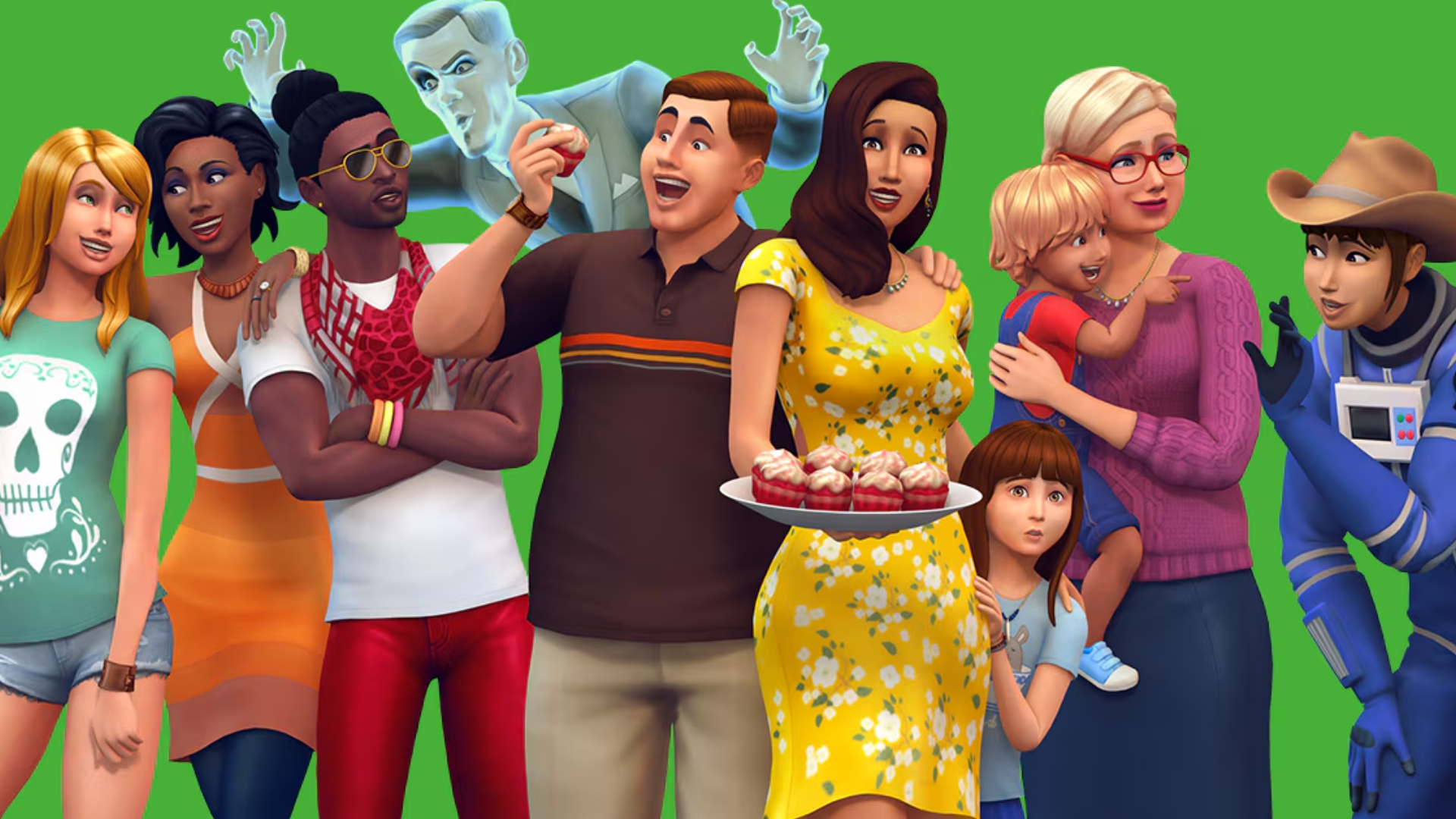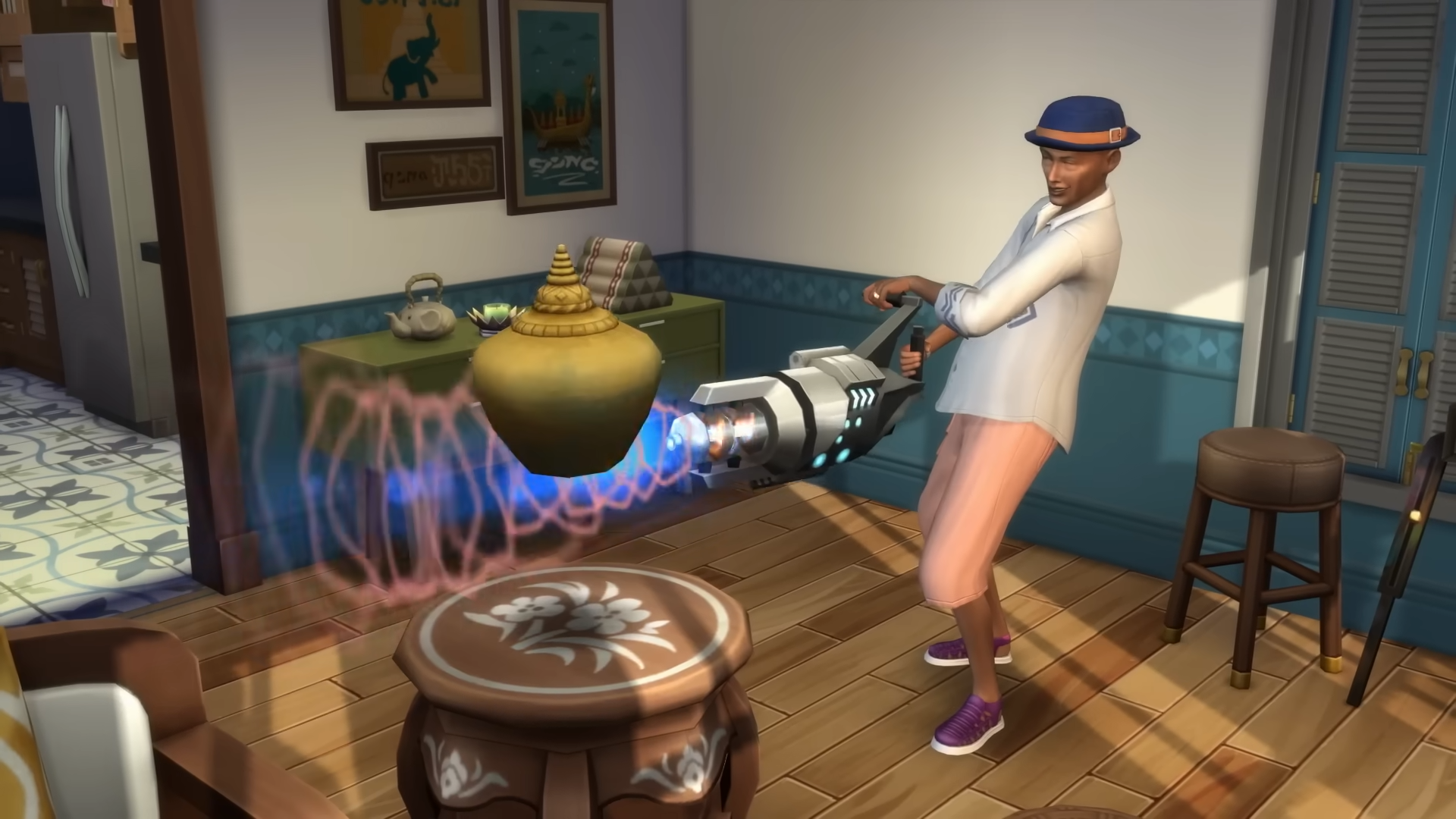Maxis canceled The Sims in the '90s, but it was saved by an unlikely hero: Electronic Arts
Project "Dollhouse" outlasted industry turmoil, gender norms, and company collapse.

A world without The Sims is hard to imagine: countless virtual homes unbuilt, countless bizarre challenges unplayed, countless Sims untrapped in swimming pools without ladders. What kind of path would my life have taken if I hadn't been able to pack the first game full of mods so I could watch Batman and Gandalf be roommates? It's unthinkable, but it was nearly the world we got. In the late '90s, Maxis almost axed The Sims—not once, but multiple times.
The story comes from Spore designer Chaim Gingold's book Building SimCity: How to Put the World in a Machine, published last week by MIT Press. Through chronicling the design and creation of the gold standard city builder, Gingold charts the history of simulation games, and of the company that brought SimCity to the world. And in the late '90s, Gingold writes, Maxis had canceled the project that would eventually become The Sims, nearly spelling an early death for the studio's now-beloved series.

Building SimCity author Chaim Gingold is a designer and theorist whose work has been featured in Wired, CNN, and the New York Times. He worked closely with Will Wright on Spore and designed the Spore Creature Creator.
Shortly after the release of SimAnt, Will Wright—the famed Maxis designer—lost his house to the 1991 Oakland Hills wildfire. As his family rebuilt their life and home in the aftermath, Wright found himself fascinated with the material and psychological motivations of daily domestic life as a basis for simulating human behavior. "The right set of motivations and objects," Gingold writes, would be the foundation for a new project that Wright hoped would "simulate people as elegantly as SimAnt simulated ants." Wright called the project "Dollhouse." We'd eventually know it as The Sims.
Dollhouse wasn't well-loved by Maxis management, however—in part thanks to the studio's gearing up for going public. Poorly-performing software releases and an industry that was ever-more expensive to compete in made Maxis averse to risk. And according to Gingold, Will Wright was falling out of auteur status in the studio: Aside from SimCity 2000, his work on games like SimEarth and SimAnt only achieved middling sales.
"Doubt and hostility to Dollhouse was pervasive," Gingold writes. Jeff Braun, Maxis's then-CEO and a primary source for Gingold's book, summarized the sentiment studio management held at the time: "A dollhouse? That's for little girls." The '90s game industry was still firmly in the era of assuming that only dudes bought games, and from what Maxis could tell, dudes did not want Dollhouse. The studio's marketing focus tests pitched the concept to teenage boys, Gingold writes, "and found that they hated it."

"In retrospect, it seems totally insane because it expanded the market," Gingold said in an interview with PC Gamer, "but I think that's the benefit of hindsight." While Dollhouse's potential seems obvious in 2024, Maxis could only see it as a failure for their target audience. Still, Dollhouse endured, thanks in part to Wright rebranding it internally as a "Tactical Domestic Simulator" called "Project X" to evade the lasting sense of focus-tested doom.
Riding the success of 1993's SimCity 2000, Maxis went public in 1995, but mismanagement and industry headwinds saw the studio's fortunes take a near-immediate downturn. By the end of 1996, amidst rising financial turmoil, Maxis canceled Wright's "Project X."
The biggest gaming news, reviews and hardware deals
Keep up to date with the most important stories and the best deals, as picked by the PC Gamer team.
Luckily, the project didn't stay dead for long. Jim Mackraz, the head of a recently-formed Maxis team called the Core Technology Group, quietly picked up the project, continuing work by subtly shifting funds and poaching developers as Maxis spun itself apart. Eventually, the game—renamed yet again to "Jefferson"—was pulled from the crumbling Maxis by an unlikely savior: Electronic Arts.
In 1997, facing surmounting financial ruin, Maxis was purchased by Electronic Arts. Quietly refined in spite of the scorn it faced, Jefferson was met with enthusiastic appraisal from Maxis's new ownership. And that was thanks, in part, to the women at Maxis who helped create it.
Maxis, Gingold said, was notable compared to other studios in the '90s for employing women in design and leadership roles—like Robin Harper, who in 1991 as Maxis's vice president of marketing established a newer, more polished brand for the studio. Crucially, women at Maxis helped shape and support The Sims, even as it was being rejected by upper management. Artists Jenny Martin and Suzie Greene, Gingold writes, helped define the game's direction by urging Wright to "emphasize people and their personalities."
Also responsible for The Sims' eventual success were Claire Curtin and Roxy Wolosenko, Maxis designers who were shifted to work as co-designers alongside Wright from canceled projects following the EA acquisition. And even Wright's daughter, Cassidy, had a hand in shaping the game: According to Gingold, she'd played early prototypes, and like Martin and Greene had helped convince Wright to abandon an early emphasis on architectural efficiency.
Finding new support at EA, the project would release in 2000 as The Sims. Turns out, it did pretty well. Gingold writes that "as of 2020, the franchise has earned EA over $5 billion."
Recent updates
The original version of this article quotes Building SimCity as stating that Maxis artists Jenny Martin and Suzie Greene invented the Sims' distinctive look, which is not a claim made in the book. The article originally called Robin Harper Maxis' vice president—Robin Harper was Maxis' vice president of marketing. The article has been updated to address those inaccuracies.
Lincoln has been writing about games for 11 years—unless you include the essays about procedural storytelling in Dwarf Fortress he convinced his college professors to accept. Leveraging the brainworms from a youth spent in World of Warcraft to write for sites like Waypoint, Polygon, and Fanbyte, Lincoln spent three years freelancing for PC Gamer before joining on as a full-time News Writer in 2024, bringing an expertise in Caves of Qud bird diplomacy, getting sons killed in Crusader Kings, and hitting dinosaurs with hammers in Monster Hunter.

